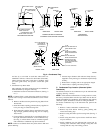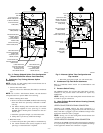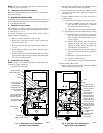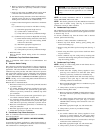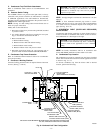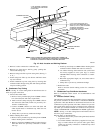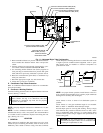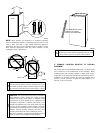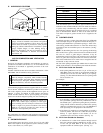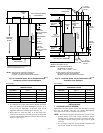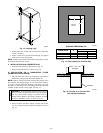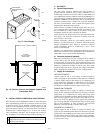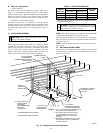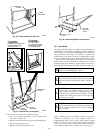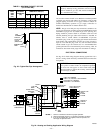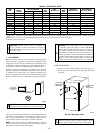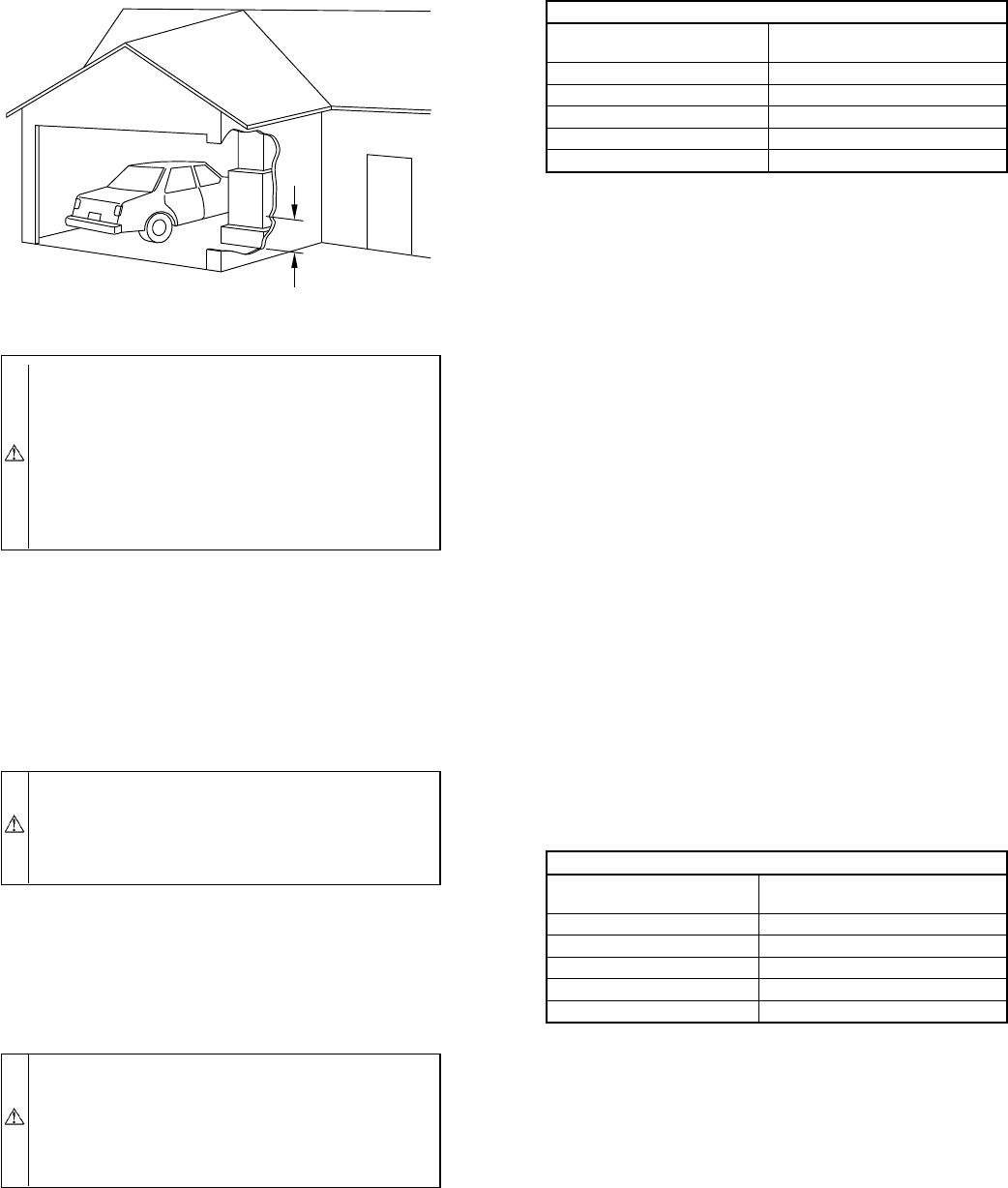
III. HAZARDOUS LOCATIONS
AIR FOR COMBUSTION AND VENTILATION
I. GENERAL
Provisions for adequate combustion and ventilation air must be
provided in accordance with Section 5.3, Air for Combustion and
Ventilation, of the NFGC or applicable provisions of the local
building codes.
Canadian installations must be in accordance with Section 7 of the
NSCNGPIC and all authorities having jurisdiction.
CAUTION: Air for combustion must not be contami-
nated by halogen compounds, which include fluoride,
chloride, bromide, and iodide. These elements are found
in aerosol sprays, detergents, bleaches, cleaning solvents,
salts, air fresheners, and other household products.
All fuel-burning equipment must be supplied with air for combus-
tion of the fuel. Sufficient air MUST be provided to ensure there
will not be a negative pressure in the equipment room or space. In
addition, a positive seal MUST be made between the furnace
cabinet and the return-air duct to prevent pulling air from the
burner area and draft safeguard opening into the circulating air.
CAUTION: The operation of exhaust fans, kitchen ven-
tilation fans, clothes dryers, fireplaces, or other appli-
ances including attic and crawlspace exhaust fans could
create a negative air pressure condition at the furnace.
Make-up air must be provided for these devices, in
addition to that required by the furnace.
The requirements for combustion and ventilation air depend upon
whether the furnace is located in a CONFINED or UNCONFINED
space.
II. UNCONFINED SPACE
An unconfined space must have at least 50 cu ft for each 1000
Btuh of total input for all the appliances (such as furnaces, clothes
dryers, water heaters, etc.) in the space.
If the unconfined space is of unusually tight construction, air for
combustion and ventilation MUST come from either the outdoors
or spaces freely communicating with the outdoors. Combustion
and ventilation openings must be sized the same as for a confined
space as defined below. Return air must not be taken from the
room unless an equal or greater amount of air is supplied to the
room.
III. CONFINED SPACE
A confined space has a volume of less than 50 cu ft per 1000 Btuh
of the total input rating for all appliances installed in that space. A
confined space MUST have 2 permanent openings, 1 within 12 in.
of the ceiling, and the other within 12 in. of the floor which freely
communicate with an unconfined space or the outdoors. (See Fig.
12 or 13.)
NOTE: In determining the free area of an opening, the blocking
effect of the louvers, grilles, and screens must be considered. If the
free area of a louver or grille design is unknown, it may be
assumed that wood louvers have a 20 percent free area, and metal
louvers or grilles have a 60 percent free area. Screens, when used,
must not be smaller than 1/4-in. mesh. Louvers and grilles must be
constructed so they cannot be closed.
The size of the openings depends upon whether the air comes from
outside of the structure or an unconfined space inside the structure.
A. All Air from Inside the Structure
1. Each opening MUST have at least 1 sq in. of free area per
1000 Btuh of the total input for all equipment within the
confined space, but not less than 100 sq in. per opening.
(See Fig. 12.) The minimum dimension of air openings shall
not be less than 3 in.
2. If the building is constructed unusually tight, in addition to
the 2 permanent openings that freely communicate with an
unconfined space, a permanent opening directly communi-
cating with the outdoors should be provided. This opening
shall have a minimum free area of 1 sq in. per 4000 Btuh of
total input rating for all equipment in the enclosure.
3. If the furnace is installed on a raised platform to provide a
return-air plenum, and return air is taken directly from the
hallway or space adjacent to the furnace, all air for
combustion must come from outdoors. (See Fig. 13.)
B. All Air from Outside the Structure
1. If combustion air is taken from outdoors through vertical
ducts, the openings and ducts MUST have at least 1 sq in.
of free area per 4000 Btuh of the total input for all
equipment within the confined space. (See Fig. 13.)
WARNING: When furnace is installed in a residential
garage, it must be installed so that burners and ignition
sources are located a minimum of 18 in. above floor. The
furnace must be located or protected to avoid physical
damage by vehicles. When furnace is installed in a public
garage, airplane hangar, or other building having a
hazardous atmosphere, unit must be installed in accor-
dance with requirements of National Fire Protection
Association, Inc.
A93044
18-IN. MINIMUM
TO BURNERS
For Example:
MINIMUM FLOOR AREA FOR UNCONFINED SPACE
345MAV Furnace
Input Btuh
Minimum Sq Ft With
7-1/2 Ft Ceiling
40,000 267
60,000 400
80,000 533
100,000 667
120,000 800
For Example:
COMBUSTION AIR FROM UNCONFINED SPACE
345MAV Furnace
Input Btuh
Free Area per Opening
(Sq In.)
40,000 100
60,000 100
80,000 100
100,000 100
120,000 120
—13—



